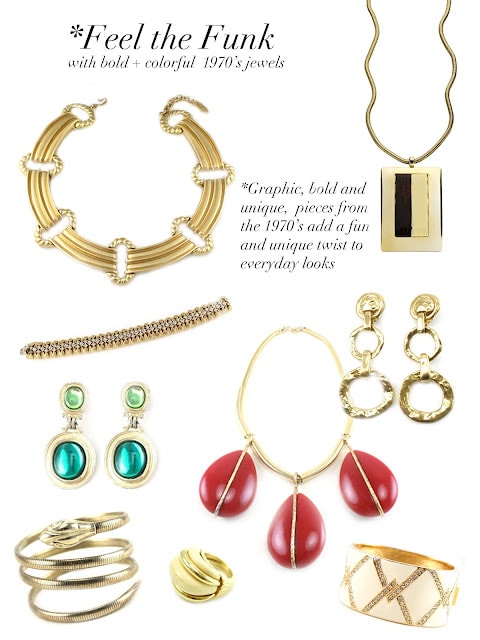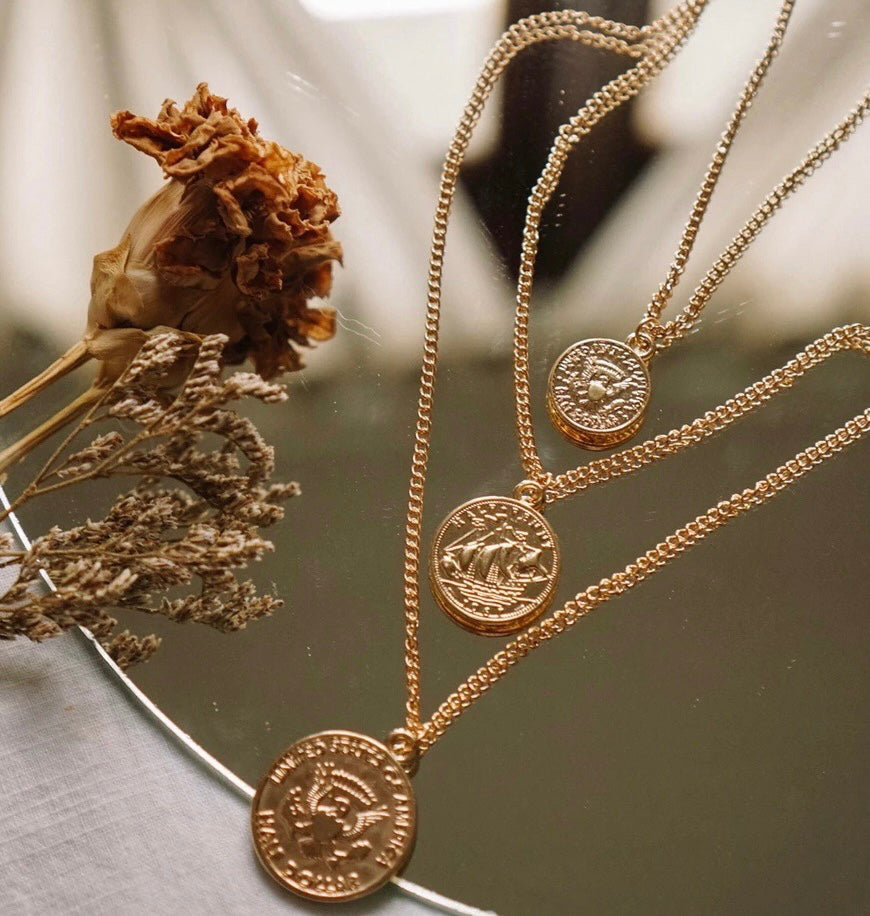Evolution of Custom Jewelry Styles: Trends and History
Share
In the ever-evolving landscape of fashion, custom jewelry has consistently stood out as a testament to personal expression, craftsmanship, and cultural significance. The allure of jewel ornaments transcends mere aesthetics; they encapsulate history, emotion, and identity. This article delves into the fascinating evolution of custom jewelry trends, exploring their historical roots and contemporary transformations. The image below provides a glimpse into the rich history of jewelry, illustrating its timeless appeal.
 Source: Fashion Era
Source: Fashion Era
Historical Foundations of Custom Jewelry
Custom jewelry has a storied past that dates back to ancient civilizations. Initially, jewel ornaments were not just decorative but served functional and symbolic purposes. In ancient Egypt, jewelry denoted social status and religious affiliations. Pharaohs and queens adorned themselves with elaborate pieces made from gold and precious stones, each with symbolic meanings—protection, prosperity, and power.
Similarly, ancient Greek and Roman societies imbued their jewelry with cultural and mythological significance. Pieces often featured intricate designs depicting gods, goddesses, and heroic tales. Fast forward to the Middle Ages, and jewelry became a marker of nobility and wealth. Lavish brooches, rings, and necklaces were crafted with detailed filigree work and encrusted with gemstones.
The Renaissance period marked a significant shift toward artistry in jewelry design. This era saw an amalgamation of scientific knowledge and artistic innovation, leading to more intricate and personalized pieces. Jewelers began to experiment with new techniques, such as enameling and gemstone faceting, setting the stage for modern custom jewelry.
Transitioning Through Time: Key Periods in Jewelry Evolution
The Industrial Revolution and Mass Production
The Industrial Revolution in the 18th century brought about a paradigm shift in jewelry production. The advent of machinery enabled mass production, making jewelry more accessible to the middle class. This period saw the rise of costume jewelry—affordable, fashionable pieces made from non-precious materials.
However, the demand for unique and personalized jewelry never waned. Victorian-era jewelry, characterized by its romantic and sentimental motifs, often featured lockets and brooches with personal engravings. This era underscored the emotional connection people have with their jewelry, a sentiment that continues to drive the custom jewelry market today.
The Art Nouveau and Art Deco Movements
The late 19th and early 20th centuries witnessed the emergence of the Art Nouveau and Art Deco movements, both of which had profound impacts on jewelry design. Art Nouveau, with its emphasis on natural forms and intricate detailing, brought a fresh perspective to custom jewelry. Pieces from this period are characterized by their flowing lines, floral motifs, and use of unconventional materials like enamel and horn.
Art Deco, on the other hand, embraced modernity and geometric forms. The bold, symmetrical designs of this era reflected the social and technological changes of the time. The use of platinum and diamonds became prevalent, and the influence of different cultures—Egyptian, African, and Oriental—added a new dimension to custom jewelry design.
Contemporary Trends: Blending Tradition with Innovation
In the contemporary jewelry landscape, tradition and innovation coexist harmoniously. Today's consumers seek unique, bespoke pieces that reflect their individuality while still paying homage to historical craftsmanship. The rise of digital technology has revolutionized the way custom jewelry is designed and produced. Computer-Aided Design (CAD) allows for precise customization, enabling jewelers to bring intricate and personalized designs to life with unparalleled accuracy.
Moreover, there is a growing emphasis on sustainability and ethical practices in jewelry making. Consumers are increasingly conscious of the environmental and social impacts of their purchases. Brands are responding by sourcing eco-friendly materials and adopting fair-trade practices. This shift towards sustainability is reshaping the custom jewelry market, driving innovation in materials and production methods.
A Modern Example of Custom Jewelry: The Rise of Personalized Pieces
A prime example of the modern evolution of custom jewelry is the increasing popularity of personalized pieces. Consumers today are not just looking for beautiful ornaments; they want jewelry that tells their unique story. This trend is evident in the widespread demand for name necklaces, birthstone rings, and custom engraved bracelets.
 Source: Aurumara
Source: Aurumara
Personalization goes beyond mere aesthetics—it adds emotional value and transforms a simple piece of jewelry into a cherished heirloom. Companies like Wear Fortune have capitalized on this trend, offering a wide range of customizable options that cater to diverse tastes and preferences.
For instance, Wear Fortune allows customers to select the metal type, gemstones, and engravings for their pieces, ensuring that each item is one-of-a-kind. This approach not only meets the demand for unique jewelry but also fosters a deeper connection between the wearer and their adornments.
Future Prospects: Embracing Technology and Sustainability
The future of custom jewelry is poised to be shaped by the convergence of technology and sustainability. As digital tools become more sophisticated, the possibilities for personalization are expanding. Augmented Reality (AR) and Virtual Reality (VR) technologies are enabling customers to visualize and customize their jewelry in real-time, enhancing the shopping experience.
Additionally, the adoption of blockchain technology is set to revolutionize the transparency and traceability of the jewelry supply chain. Consumers will be able to verify the origins of their jewelry, ensuring that their purchases are ethically sourced and environmentally friendly.
Sustainability will continue to be a driving force in the industry. Innovations in material science are paving the way for eco-friendly alternatives to traditional gemstones and metals. Lab-grown diamonds, for instance, offer a sustainable and conflict-free option without compromising on quality or aesthetics.
Jewelry brands are also exploring circular economy models, where old jewelry is recycled or repurposed into new pieces. This approach not only reduces waste but also allows consumers to breathe new life into their cherished heirlooms.
Insights and Recommendations for Custom Jewelry Enthusiasts
The journey of custom jewelry, from ancient civilizations to the digital age, underscores its enduring appeal and significance. For consumers and enthusiasts alike, understanding the historical context and current trends can enhance their appreciation for these exquisite pieces.
When investing in custom jewelry, consider the following insights:
-
Personalization Adds Value: Opt for pieces that reflect your personal style and story. Custom engravings, birthstones, and unique designs add emotional value and make the jewelry truly special.
-
Embrace Sustainability: Support brands that prioritize ethical sourcing and eco-friendly materials. Look for certifications and transparency in the supply chain to ensure your jewelry aligns with your values.
-
Explore Technological Innovations: Take advantage of digital tools and technologies that offer a seamless customization experience. Virtual try-ons and CAD designs can help you visualize your piece before making a purchase.
-
Appreciate Craftsmanship: While modern technology offers precision, traditional craftsmanship adds a timeless charm to custom jewelry. Seek out artisans and brands that blend both to create unique, high-quality pieces.
-
Stay Informed: Keep abreast of the latest trends and innovations in the jewelry industry. This knowledge can guide your choices and ensure that your collection remains relevant and valuable.
In conclusion, the evolution of custom jewelry styles is a testament to human creativity, cultural heritage, and technological advancement. By understanding its rich history and embracing contemporary trends, enthusiasts can enjoy and invest in pieces that are not only beautiful but also meaningful and sustainable.




